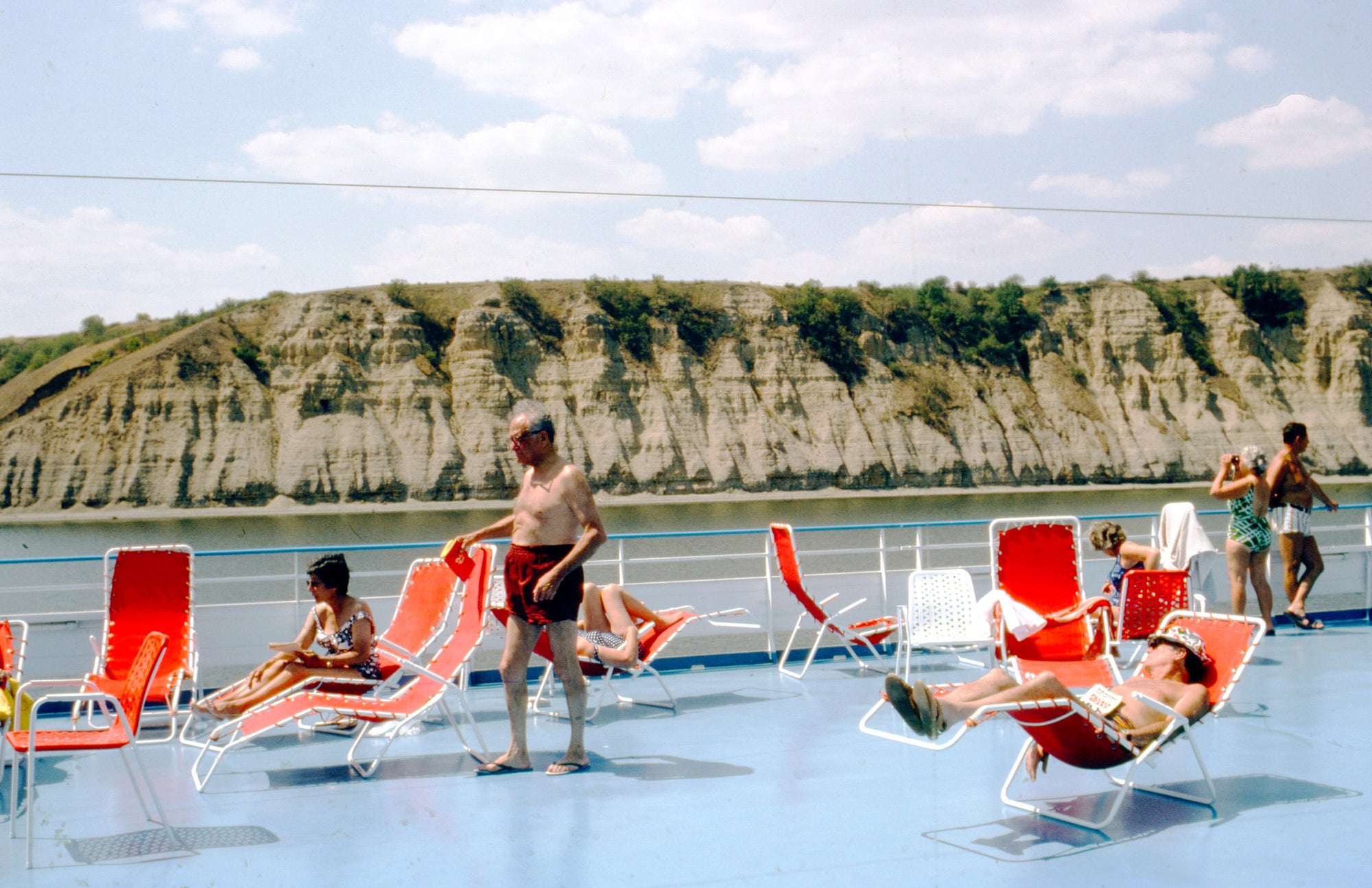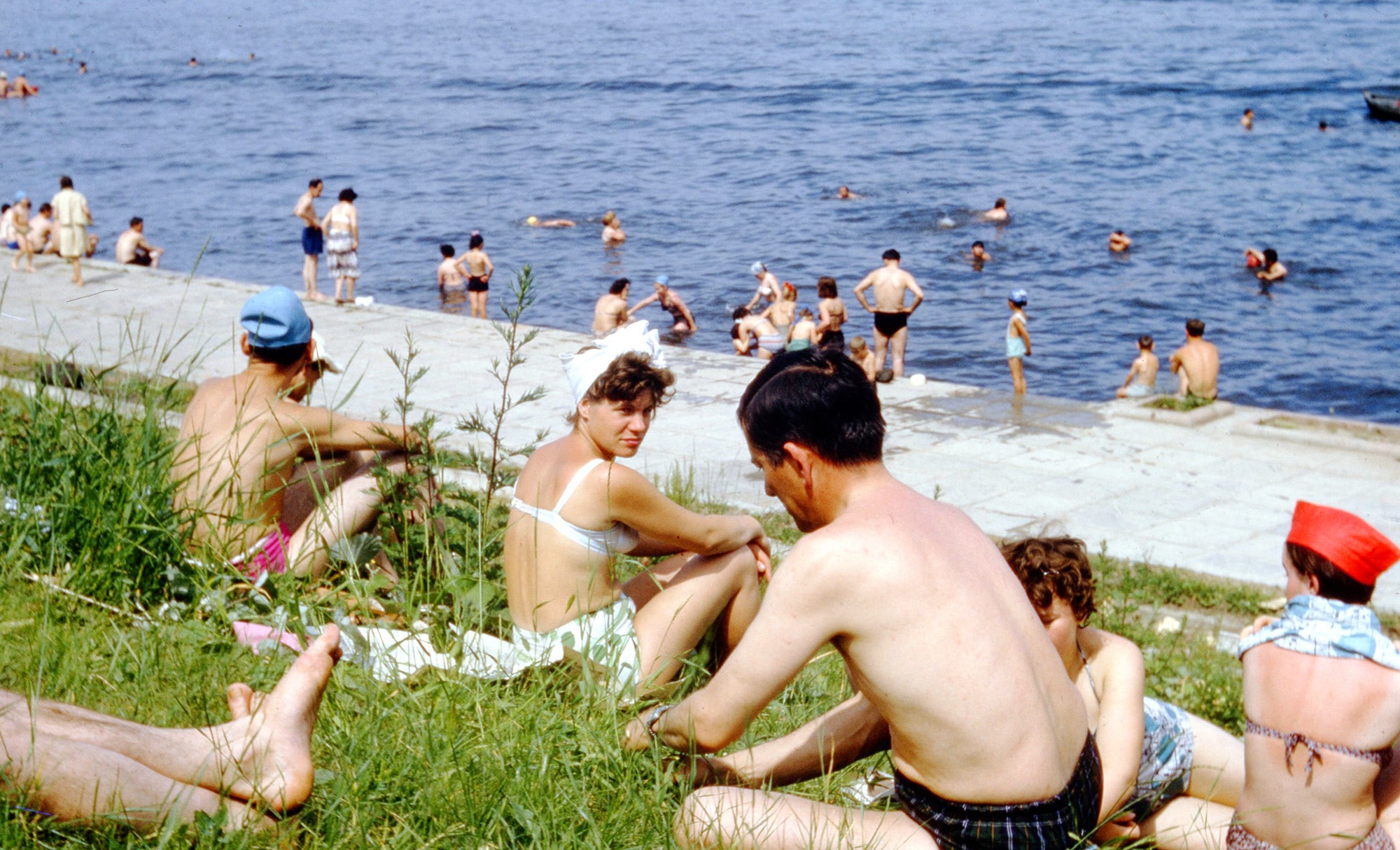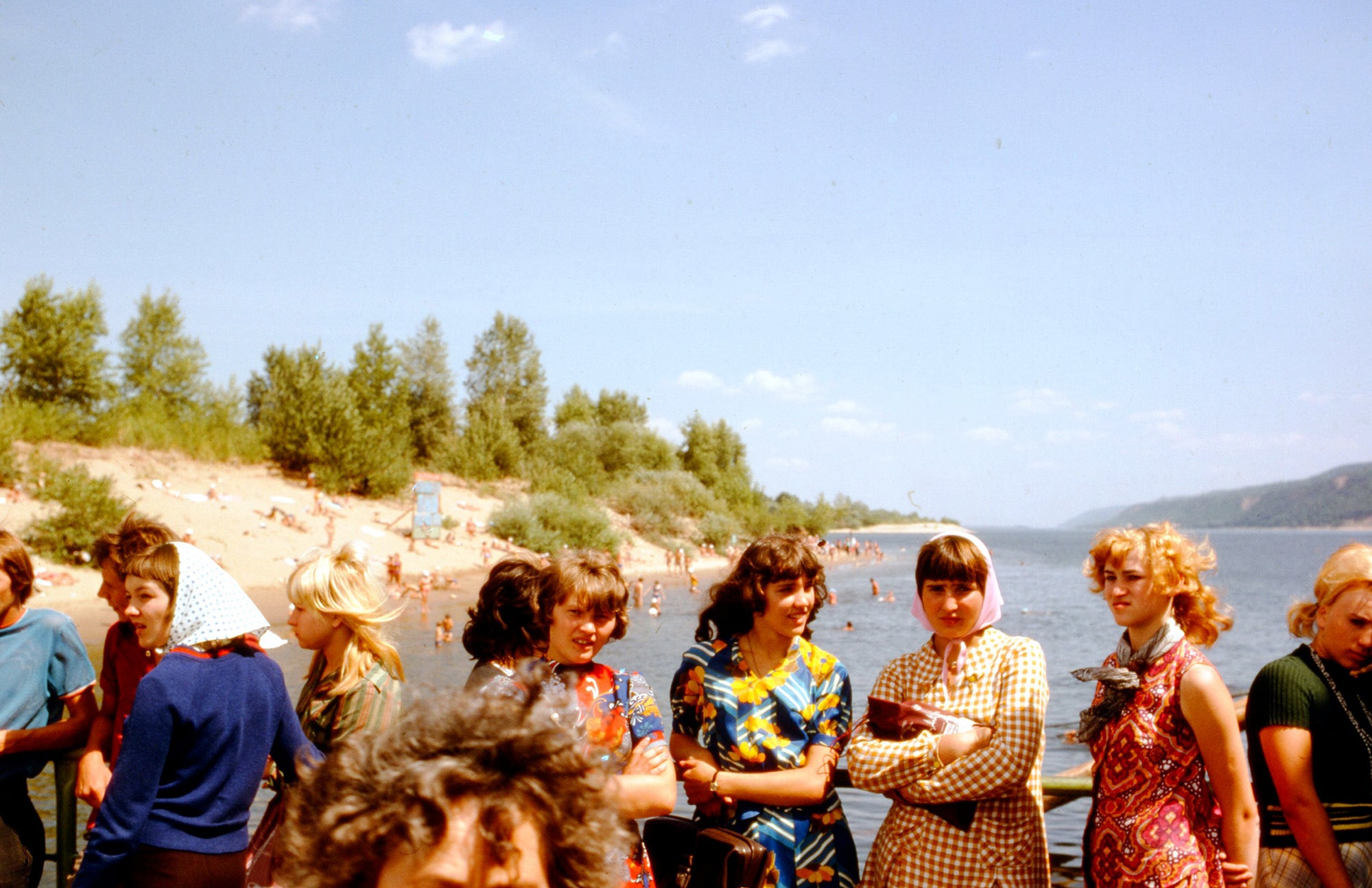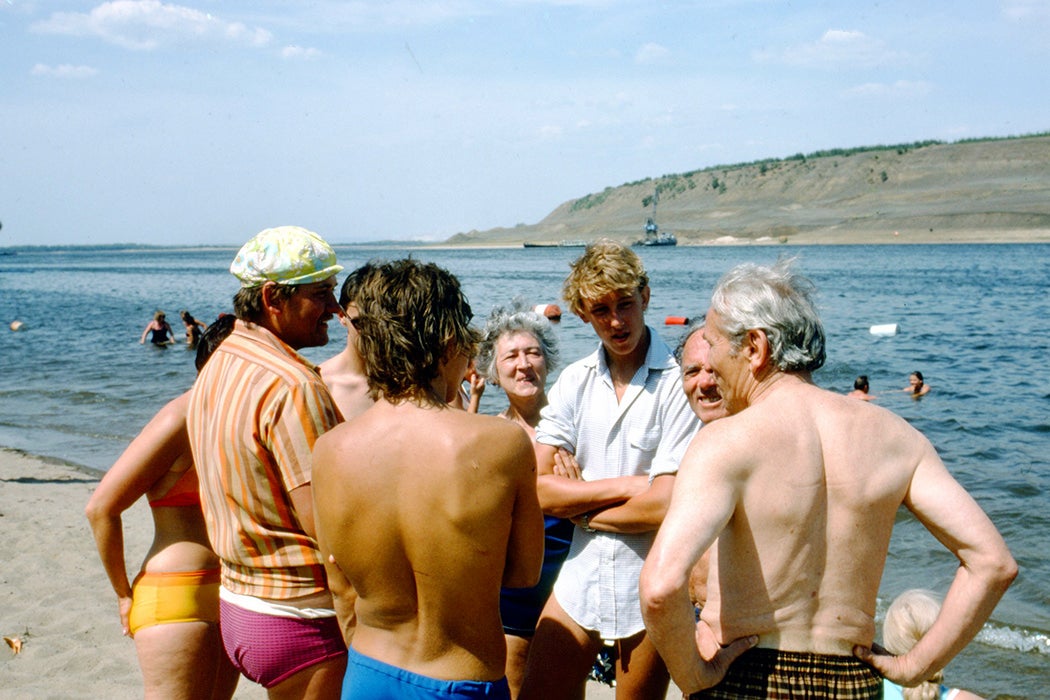In the Soviet Union, the government regulated almost every aspect of life. Censors decided which books could be published. Comedians had to submit material for approval before they could step behind a mic. Failing to applaud a speech by Joseph Stalin could get a person arrested. So could listening to bootlegged copy of the Beatles.
Even where, when, and with whom you would vacation was determined by the Communist Party.
In the West, what you do when you leave the office was and is your own business. In the USSR, it was everyone else’s. That fact drove Soviet policy toward time off for the better part of a century, starting in 1922, with the establishment of the Soviet Labor Code. It offered workers 18 years and older a minimum of two weeks paid time off per year; those under 18 were allotted a full month. If illness or emergency prevented a person from taking their vacation, they could punt their time to the next year.
The Soviet Union introduced paid time off well before other industrialized countries. France did not bestow this right until 1936; Great Britain followed two years later. Last was the United States, where PTO remained a luxury reserved for the middle and upper class until the end of the Second World War and where it remains controversial.
However, what truly set the Soviet Union apart in its approach to paid time off was that it also provided ways for workers to fill up that time and with whom to do so. It encouraged workers to vacation with groups of relative strangers as opposed to their friends and families. They were all part of a collective and that umbrella united them. In the Soviet Union, after all, the collective—not the family—was the most important social unit. Under Stalin, the state constructed summer resorts and tourism bases throughout the region. Each year, a limited number of accommodations at these locations were offered at a reduced cost or—in some cases—free of charge to one in every ten Soviet workers.
At first, the Soviet Labor Code and the domestic tourism industry it spawned were hailed by Party members as shining examples of socialist superiority and hints of the bright future awaiting the country’s hardworking citizens. But as time went on, the communist ideology that shaped the Soviet vacation came into conflict with the consumerist behavior holidays inevitably promote.

As members of a collective, citizens were expected to spend their free time in a manner the government and its leading theorists considered beneficial to society as whole, regardless of an individual’s preferences.
In the wake of the October Revolution in 1917 and Civil War, leisure became associated with laziness—a quality of bourgeois existence the Bolsheviks wanted to eradicate. As the country industrialized, it became evident workers needed time away from the job if they were to remain productive when they were on it. Leisure, writes Lawrence Whetten, a professor of international relations at the University of Southern California, “became a social responsibility as well as a constitutional right.”
Get Our Weekly Digest
The state used leisure as incentive. Decrees from 1930 and 1937 gave three additional days of paid time off to workers who completed two years of uninterrupted employment. These edicts were part of the Stakhanovite movement, a propaganda campaign named for the miner Alexei Stakhanov who was celebrated internationally for mining more than 14 times his quota of ore. The campaign encouraged people to follow suit and go above and beyond their regular responsibilities.
A 1947 issue of the trade union daily Trud cited by Edmund Nash, of the Bureau of Labor Statistics, reports that when distributing discounted accommodations at resorts, preference was given to workers with continuous service and record-breaking performance, as well as to invalids of the Great Patriotic War. A survey of Soviet family budgets, meanwhile, finds higher earners were also given larger vacation payments.
While all Soviet citizens were entitled to paid time off, only a small number could afford to go on an actual vacation without state subsidies. Some members of the Communist Party liked it this way. “By withholding the drug of prosperity,” Whetten explains, “the Soviet government more easily inspires self-sacrifice.”
Following this train of thought, hardliners feared widespread vacationing would turn their production-oriented culture back into a consumer-oriented one. They also believed that, once the science of work systems had been perfected, workers would no longer need rest, rendering time off obsolete. Only one of these assumptions proved correct.
Broadly speaking there were two types of Soviet vacations: one where people stayed in a single place, and one where they moved around. The former took place at the aforementioned resorts, also referred to as sanatoriums or rest homes. Designed to refresh and reenergize workers for upcoming Five-Year-Plans, these resorts subjected their guests to daily wellness procedures, such as massages and mineral baths. They went on walks, played tennis or volleyball, and ate special diets. Resort staff imposed obligatory “dead hour” naps during the day, and offered movies, live concerts, plays, and dancing in the evening.
Nightly entertainment aside, Soviet resorts shared little with their Western counterparts. While drunks roamed Moscow, they were conspicuously absent from the tourist town of Yalta, where, Whetten says, “resting is a solemn business. Restful it is, but fun it is not!”
Not everyone stuck to the government-programmed agenda, though. “Resort affairs” were so common, they were satirized in films. Old Walls, from 1973, which includes a scene where women return to their own rooms after having spent the night at somebody else’s.
Tour vacations, by contrast, were less about resting and more about education and exploration. Recommended to healthy adults, they included hikes through nature reserves in the Crimea and the Caucasus, followed by stays at seaside campgrounds. Tours became increasingly popular, possibly because improved working and living conditions made the programmed rest and relaxation of sanatoriums less appealing than in the past.
While resorts prepared vacationers for more work, tours were meant to boost their sense of nationalism by exposing them to the natural beauty of the motherland. Completion was rewarded with a “Tourist of the USSR” merit badge, signifying the recipient had learned key “tourist skills” like lighting a fire, setting up a tent, or navigating a trail with a compass.

Because leisure was such a vital component of Soviet society, the state paid close attention to public opinion on the subject. At the end of the summer season, officials reviewed comments left by vacationers to determine which destinations and activities were most appealing. This practice, which began in the 1930s, continued into 60s.
Many of the notes were positive. “The vistas and landscapes of the beautiful Volga,” one comment cited by Soviet historian Diane Koenker reads, “develop our aesthetic appreciation of nature and provide much joy to the spirit.” A person from Uzbekistan’s Fergana Valley, who vacationed at Sochi, observed “I thought there was nowhere as beautiful as the Fergana valley. Alas! I was wrong.”
Still, anecdotal evidence suggests that many Soviets were frustrated with the lack of entertainment. “Our local theater shows me nothing,” goes a well-known joke. “Don’t worry, comrade, another one will be built in the coming Seven-Year-Plan. Then we will have twice nothing.”
The one complaint that the state heard over and again was that vacationers wanted to go on holiday with their own families. But parents wishing to spend time with their children instead of with coworkers or total strangers presented an ideological conundrum.
Ever since the 1930s, it had been customary for Soviet citizens to travel in groups of 25 to 40 people randomly put together by their trade unions. When adults relaxed at resorts or embarked on tours, their children were sent to summer camps managed by state-run youth groups like the Young Pioneers or the Komsomol.
When vacations were still a novelty in the first part of the 20th century, families did not mind being separated. By 1963, however, feelings had changed; a survey from the Communist Youth League newspaper Komsomol’skaia Pravda revealed that as many as 45 percent of Soviet vacationers preferred to travel with friends or family, compared to just 15 percent who enjoyed the company of strangers.
The state was hesitant to respond to these new demands, and for good reason. Until then Soviet vacations served as teambuilding exercises that fostered group cohesion. The closer people got with their family, the further they removed themselves from their neighbors, colleagues, and government.
Diverging interests led to disputes. “We have an unpleasant picture,” a rest home director cited by Koenker said in 1955, “especially in the summer. Papa or mama arrives with children and we won’t take them. They raise a fuss, there are tears, pleading, they’ve spent money already for the trip, they say that the factory committee chairman said, ‘Just go, they won’t chase you away.’ But the children cannot be accommodated.”
Top-ranking officials refused to amend the policy, so administrators at the local level had to adjust. One tourist base in the relatively affordable seaside town of Yevpatoria in western Crimea started advertising activities for parents and children alike, including short hikes. Cafeteria workers started preparing kids menus in addition to their regular fare.

In Sochi, the busiest vacation destination in all of Russia, multistory hotels welcoming parents and children were built next to the unionized, adults-only sanatoriums. These hotels similarly offered child-friendly activities, including arts and crafts. At one point, Sochi even boasted a small amusement park.
By the 60s and 70s, holidays had become more affordable, and most Soviet vacationers were now paying with their own money rather than the government’s. Given their personal investment, workers wanted a say over how they spent their money.
The more they behaved like consumers, the more the tourism industry began treating them as such. “We are supposed to serve the tourist,” Aleksei Abukov, the head of the Soviet tourism council, said in 1969 as recorded in the State Archive of Russian Federation, “the tourist is not there to serve us. The words ‘no’ and ‘be patient’ must disappear from our lexicon.”
“The rise in popularity of the family vacation,” surmises Koenker, “symbolizes…the triumph of the idea of popular consumption over purposeful production. Once the vacation was seen as leisure, rather than a necessary element in the reproduction of one’s work capability, the state now existed for the consumer, rather than the producer existing for the state.”
The Soviet vacation played a crucial role in loosening, even dismantling the ideological restrictions placed on freedom. Indeed, during Nikita Khrushchev’s Thaw, a period of decreased repression and censorship, it became acceptable to build one’s own dacha or summer home so one could, Whetten says, vacation “by oneself, away from the collective.”
Vacationers who wanted to visit resort towns or tourist bases could arrange their accommodations privately as opposed to through a trade union—a phenomenon unheard of under Stalin. Although this was difficult and more expensive, it also promised independence—a price that some, whom European studies professor Christian Noack refers to as “wild tourists,” were willing to pay.
In addition, Soviet citizens under Khrushchev received permission to travel to the neighboring countries of Eastern Europe. Where the state saw an opportunity to foster solidarity between different regions of the USSR, their travel policies inadvertently opened the door for political dissent to spread from one culture to another.
Initially, traveling abroad was tightly controlled and badly managed. During the summer of 1959, according to Whetten, vacationers had to wait for up to eight weeks for train tickets to the principal cities of Central Asia. Travel became easier and less regulated after the introduction of cars, which made vacationers much more self-reliant.
In his 1960 article, Whetten wondered whether the Kremlin could “flirt with consumer demands, including the more personalized use of leisure time, without passing the point of no return.” Decades later it appears that although the government certainly tried, the answer to this question was a resounding no.
At the same time, one ought to remember that while vacations ultimately undermined the ideological foundation of the Soviet Union, it was ideology that called for their creation and normalization in the first place. In the Soviet Union, as in Europe and the United States, political groups on both ends of the spectrum were addressing problems related to leisure, labor rights, and employee wellbeing long before corporations ever did.







